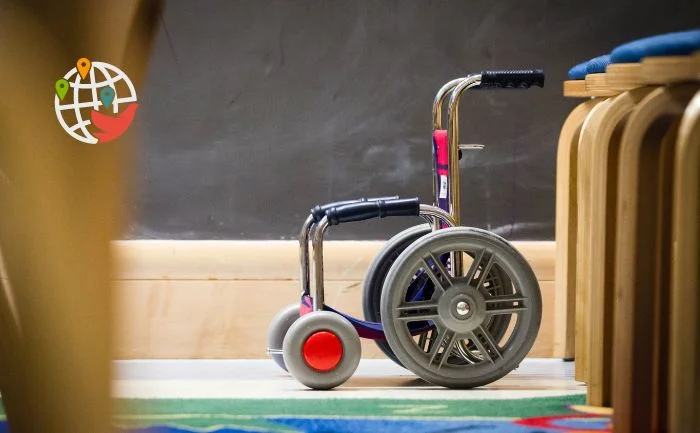Canadian children with disabilities control computers with their minds

The latest computers, controlled by impulses from the brain, help paralyzed children live full lives.
A children's hospital in Toronto is successfully using the latest technology to help paralyzed children. The facility uses computer interfaces that are controlled by impulses from the brain. It is no exaggeration to say that children control these computers with their minds.
In order for the magic to happen, you need an ordinary laptop and a sensor that is put on the child's head. It looks like several black ribbons equipped with 16 touch sensors. They read the child's brain activity and convert the impulses into commands to the computer.
With the help of this equipment, paralyzed children can play, draw, watch videos, and also type and voice small messages for others. For example, a child can independently go to YouTube, find an interesting video and turn it on. He can also maintain a basic conversation with those around him and communicate his needs.
Such technology is especially important for paralyzed children with speech disorders. Other children who have no control over their bodies can give commands to the computer using their voice. However, thanks to new technology, even deaf-mute paralyzed people can fully interact with the world around them.
The hospital where this technology was first introduced is called Holland Bloorview. It is now being tested by several dozen children of different ages, from toddlers to teenagers. At this stage of its development, such computer interfaces already allow children to talk to others, learn simple things and spend their leisure time interesting. In time, they will become capable of more. For example, with them, people will be able to write programs and complex texts, read books, and turn pages. They will be able to be completely independent and even be successful in mental work.
The technology was invented in 2019 at the hospital's research center. Importantly, it is non-invasive — you don't need surgery to use it. Sensors are simply attached to the scalp with a special gel that improves impulse conduction. The software responds to two types of pulses: visual and motor.
It takes several months for today's children to learn how to operate such an interface. Gradually, the technology will be refined, so that it is possible to understand it in a couple of days.
Canadian scientists recognize that this is a big step for medicine and neurology. The technology gives hope to many paralyzed people. With it, they will be able to work, communicate with others, learn, and independently perform everyday activities. It will take a long time to refine the interfaces to this level, but many are willing to wait for this moment like a true miracle.



















